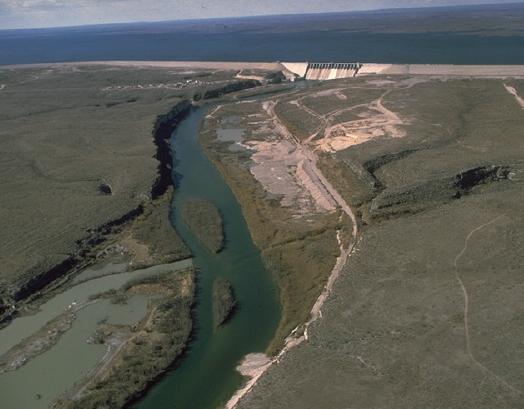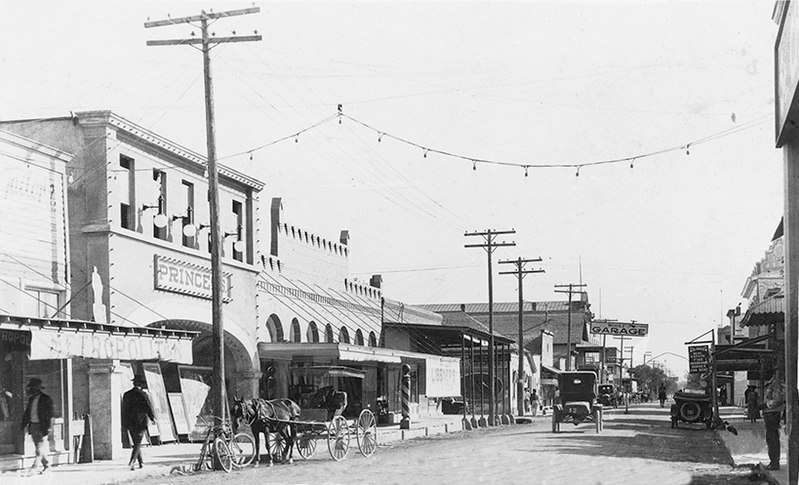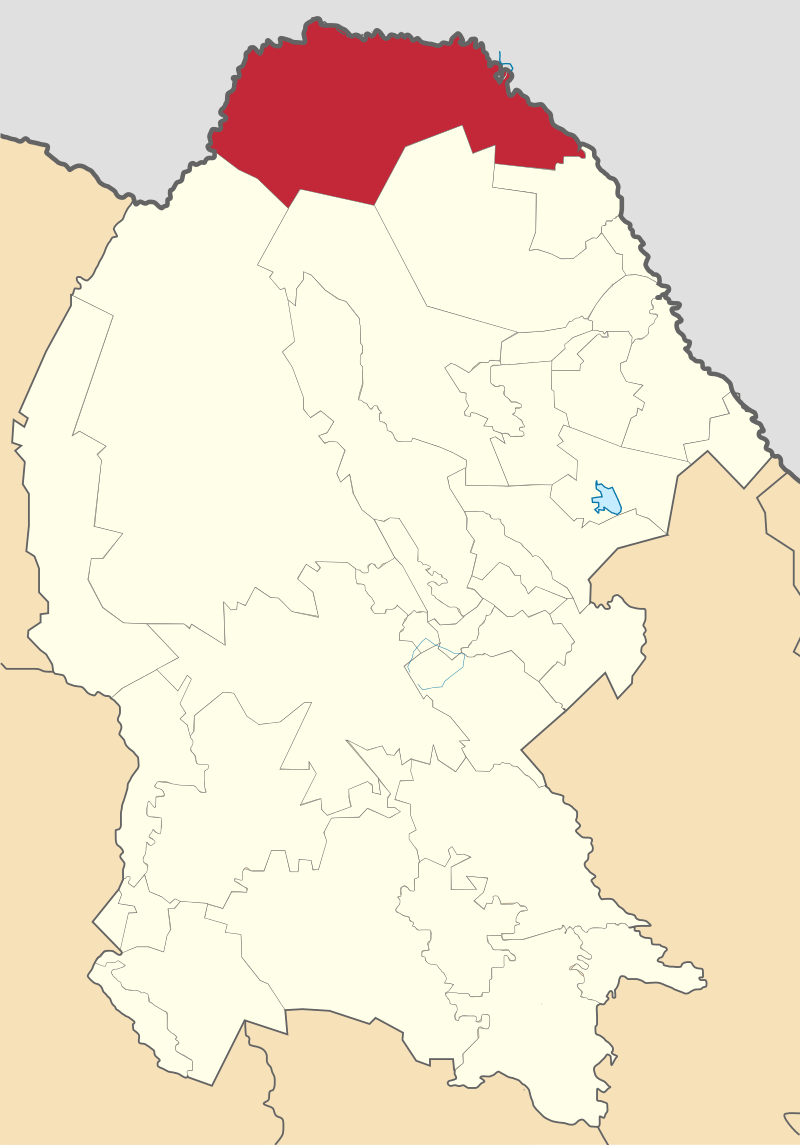Del Rio, Texas, and Acuña, Coahuila, are neighboring cities located in the United States and Mexico, respectively. They have been serving as the US-Mexico border cities since the late 19th century. The city of Del Rio sits along the south side of the Rio Grande (the river marking the US-Mexico border) while the Ciudad Acuña is situated at the north side.
The cities form the Del Rio-Ciudad Acuña Metropolitan Area which is the seventh-largest binational metropolitan area located along the US-Mexico border. Also called Tierra de la Amistad (“the land of friendship”), it consists of the US micropolitan area combined with the Mexican Metropolitan Area. In 2015, its total population was estimated to be around 280,000.
International Border Crossings
Two bridges connect the cities of Del Rio and Acuña. The Lake Amistad Dam International Crossing or “Presa la Amistad” is a dam that acts as a six-mile-long international bridge between the two nations while offering a wide two-lane roadway. The 2,000-feet long Del Rio-Ciudad Acuña International Bridge or “Puente Acuña” is the other, more well-known bridge, as it consists of a four-lane wide road along with two sidewalks.
Both bridges are owned by the US and Mexico government and ensure a safe and efficient border crossing for all citizens. They are open 24/7, symbolizing stable cross-border relations fostered between the two nations. The International Bridge provides one of the shortest routes from Mexico to the US and vice versa, making it the priority of countless tourists and businesses undertaking international travel.
Del Rio
Del Rio is situated in southwestern Texas and is the county seat of the Val Verde County. The city is located six miles south to the Rio Grande. The Laughlin Air Force Base, the largest and busiest pilot-training base in the US Air Force, can be found on the eastern side of Del Rio. The Del Rio International Airport and Amtrak Railroad Service serve as the major modes of international transportation.
In 2010, Del Rio had a population of 35,591. Another estimate made in 2019 put the number at 35,760, indicating a roughly uniform number of residents. The total population count of the US micropolitan area was put at 55,000 in 2015. With almost 12,000 housing units, the population density is approximately 2,200 people per square mile, and the housing density is 770 per square mile.
In the census conducted in 2000, it was observed that almost a third of Del Rio’s population consisted of individuals younger than 18. Citizens older than 64 made up nearly 12% of the population while the median age was 32 years. About 27% of the total population was below the poverty line, most of which consisted of citizens under 18 or those older than 64.
Lake Amistad, situated less than 20 miles from the inner city, facilitates visitors with several water-based recreation activities throughout the year. These include swimming, scuba diving, fishing, boating as well as hunting, camping, and picnicking. The lake and nearby areas contain diverse plant and animal life. The George Paul Memorial Bullriding is the oldest continuous bull-riding event in the world.
History
Evidence suggests that the original Indian settlements of Del Rio date back to at least 10,000 years ago. This is the reason why today Val Verde County contains one of the richest concentrations of rock art and archaeological remains in North America. Later on, the first Spanish explorers would visit the area near the end of the 17th century and establish settlements in the 1730s.
Del Rio’s initial title was San Felipe del Rio. According to the local lore, this name owed to the early Spanish explorers who offered a mass at the site on St. Philip’s Day. Although their mission failed due to the opposing native Indians, the name survived until the first post office was established in 1883. The US Post Office Department suggested shortening the name to “Del Rio” to avoid confusion with San Felipe de Austin.
During the Second World War, the US Army opened a base near the city called the Laughlin Army Field, which was closed after two years. However, in 1952, it was reactivated as Laughlin Air Force Base to operate as an Air Training Command Center. Today, about 500 pilots graduate from the base each year.
Education
The San Felipe Del Rio Consolidated Independent School District serves the city of Del Rio. It includes four high schools, two middle schools, and several primary schools. The district enrolls almost 10,450 students and 637 teachers throughout various campuses. Del Rio is also home to a two-year community college and the four-year Rio Grande Del Rio College.
Industry
Throughout its history, Del Rio has maintained a steady economy primarily through extensive ranching and agriculture. In recent years, however, Del Rio has also become a retirement center. Besides this, the presence of almost 400 archaeological sites and its proximity to Mexico has made it a popular tourist attraction.
Ciudad Acuña
The city of Acuña is located parallel to Del Rio on the Rio Grande in northern Coahuila and serves as a port of entry. It’s connected to the rest of Coahuila through a railroad and highway and is served by domestic airlines. The municipal seat of the surrounding municipality of Acuña lies at Acuña, which contains almost all of the municipality’s population.
In 2010, the city had a population of 134,233. By 2017, this number had significantly increased to 201,778, marking Acuña as the fastest-growing city in Mexico. The municipality’s total population was put at 214,616, indicating that almost 95% of it was that of Acuña’s. Acuña is currently the fourth-largest city in the state of Coahuila.
History
The region of Acuña was founded by a group of colonists led by Domingo Urias, Irineo Arevalo, and Maximina Espinoza. The first settlement took place on 27th December 1877. In three years, the young community received the status of a villa (town) under its first name “Garza Galán.” In the year 1884, that name was changed to Congregación las Vacas.
The 19th century poet Manuel Acuña was an influential figure in Mexican literature. It is said that after his suicide at the age of 24, his colleagues wished to remember him through their works in prose and poetry. In fact, in 1912, it was decided that the region would be called Villa Acuña in honor of Acuña’s memory. In 1951, it was finally given its current status of a city by Don Jesus, making it Ciudad Acuña.
During the start of the 1960s, plans were being made between the US President Dwight Eisenhower and Mexican President Adolfo Mateos regarding the construction of a dam. The construction began on December 1966 when each president met on the International Bridge to finalize the plans. On September 1969, Presidents Richard M. Nixon and Gustavo Díaz Ordaz met for the official dedication of the dam.
Education
Besides numerous private schools offering basic education, Acuña is home to Technological University of Ciudad Acuña (Universidad Tecnológica de Ciudad Acuña). In the past, it has also been commonly observed that students living in Acuña have attended schools in Del Rio, given the close proximity of the cities and the fact that many Mexican parents work in the Del Rio side of the border.
Industry
Given its 100% union-free status, Ciudad Acuña is home to more than 55 maquiladora plants, established by well-known companies like Oster, Arconic, Bendix, Irvin Automotive Products, and Gentherm de Mexico. These factories encompass a broad range of products including automotive seat components, brake and hydraulic parts, mining truck components, cable assemblies, wire harnesses, and waste receptacles. Acuña is also a commercial center for the rich agricultural hinterland.
Conclusion
Del Rio and Acuña share their roots in a history that is well over a century old. The Amistad Dam, derived from the Spanish word for friendship, represents the successful US-Mexico collaborations and future developments. The Del Rio-Ciudad Acuña Metropolitan Area is a quickly-growing settlement offering a diverse culture and plenty of outdoor activity.




